Ant mounds are types of structures from excavated soil some species of ants build. While ant mounds are a visual impediment around the house and on the lawn they can also destroy a lawn.
Apart from their negative visual impact, ant mounds can be dangerous as well. They can host thousands of ants even if these mounds aren’t the actual nest, but an extension above the ant nest.
Ant mounds are difficult to destroy. The queen ant or the queens of a nest need to be eliminated before destroying an ant mound. This is quite difficult for the average person as identifying the queen ant isn’t always easy.
Table of Contents
What Are Ant Mounds?
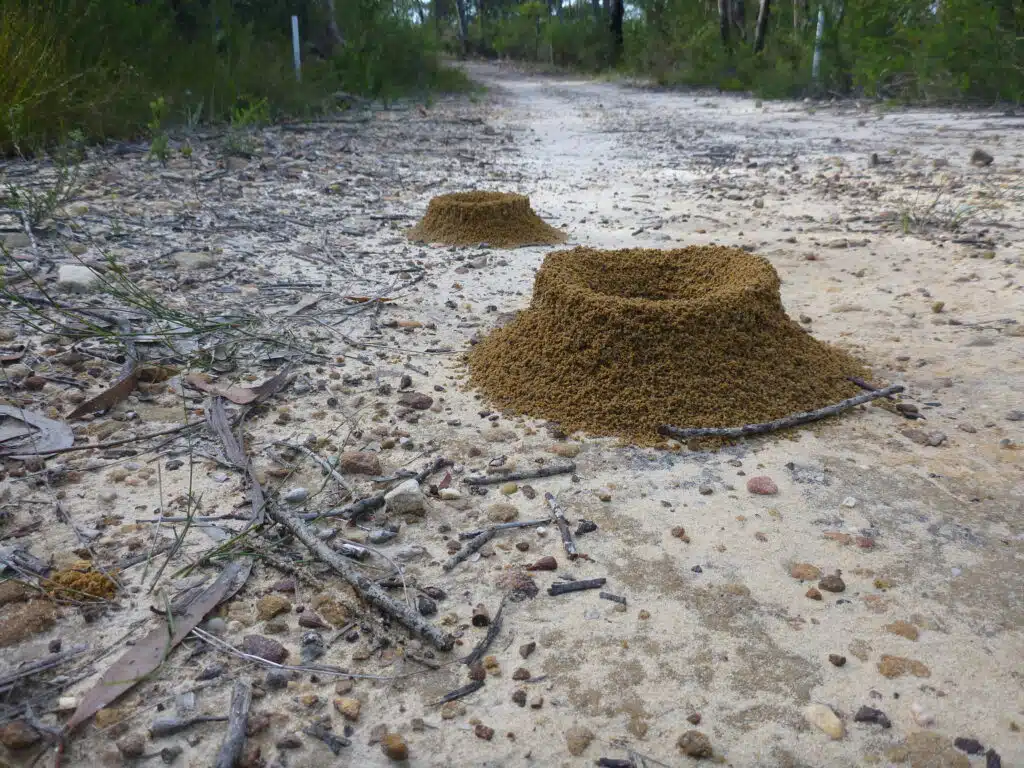
Ant mounds are soil structures made by worker ants. Excavated soil from underground tunnels is piled up at the surface creating an ant mound. This type of structure is where the entrance and exit to the ant nest lie. Most ant mounds are made either from soil, sand, or soil and vegetation.
- Soil – typical ant mounds found in North America are made from soil. Ant mound soil is loose, as is the ground of ants are tunneling through.
- Soil and sand – sandy terrains have a higher sand percentage in the ant mound
- Soil and vegetation – soil and vegetation is common in ant mounds built in grassland (Yellow meadow ants build ant mounds with soil and vegetation)
Why do ants build ant mounds?
Ant builds ant mounds as a protective structure above the underground nest.
While not ants build large ant mounds, many ant species can build small ant mounds or similar structures which protect the nest. Here are a few common reasons why ants build ant mounds
They need a place for excavated soil
Ants build large underground tunnels and underground chambers connected by tunnels. These result in a lot of soil that needs to be excavated. Instead of carrying this soil far away, ants simply stack it on top of the ground.
Predator protection
Better nest protection is one of the main benefits of having extra soil or an ant mound above the nest. Cats, dogs, spiders, snakes, fish, and lizards are common predators that find it difficult to reach the ants in the nest when they have to dig through a large ant mound.
Temperature protection
Ants often become inactive when temperatures are constantly below 75°F. An ant mound helps maintain a constant nest temperature which helps ant colonies survive extreme weather changes.
In addition, ant mounds may expand the active season for ants.
Types of Ant Mounds – Identification Guide
Ant mounds look different from species to species. They are also influenced by the habitat as ant mounds may or may not contain vegetation.
Fire ant mound
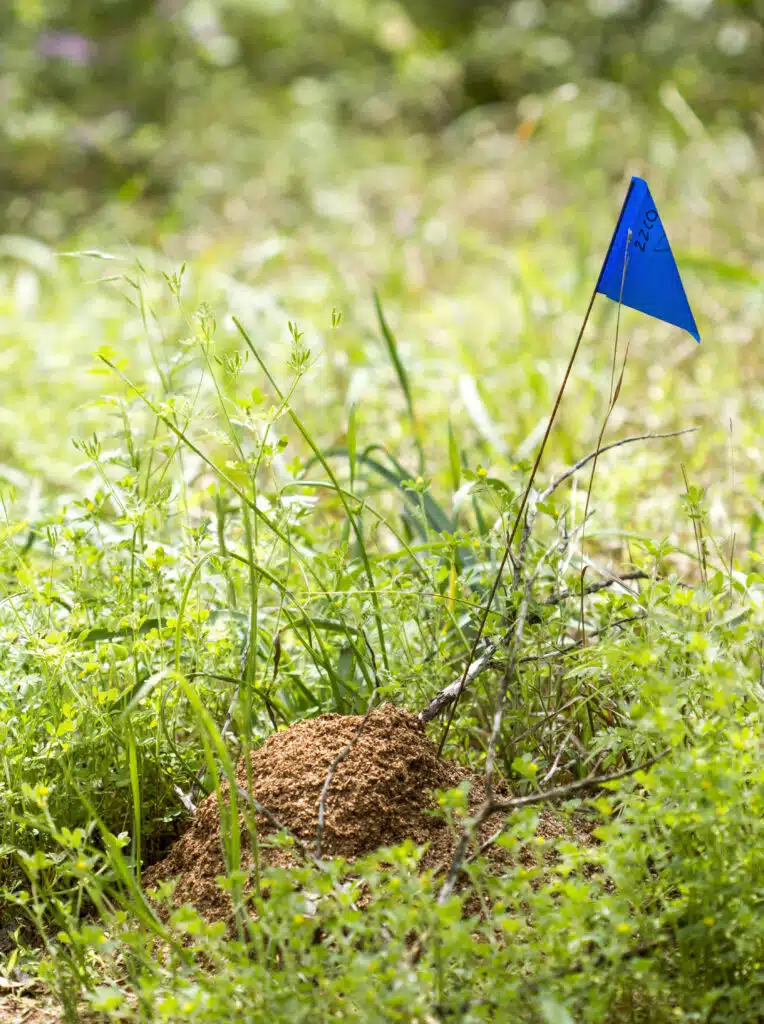
Fire ants are part of the Solenopsis genus. These ants are common across the world, especially in South America, Central America, and limited parts of North America.
Accidentally introduced to the US, these ants are known for building large mounds.
Fire ant mounds have a distinct loose soil appearance. They are made with an entrance as well as multiple ventilation craters.
Open sunny areas are preferred for these mounds. This includes all types of grassland, parks, lawns, and even golf courses.
Carpenter ant mounds
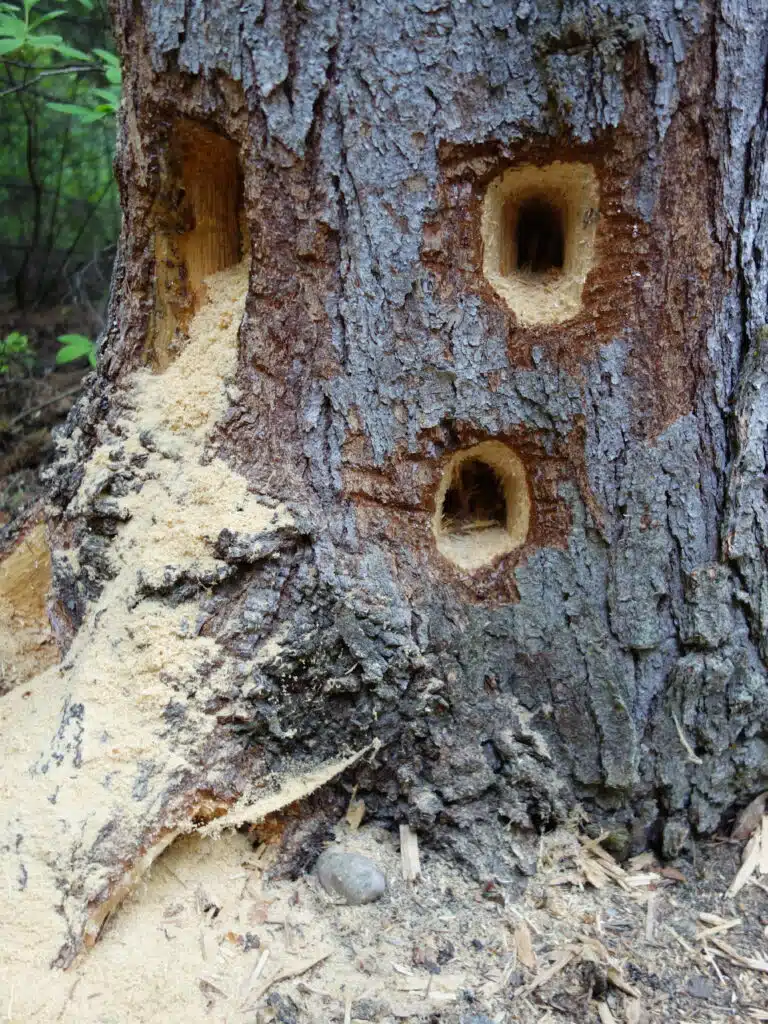
Carpenter ants live inside wood and they don’t build soil mounds. However, the excavated wood resembles a soil ant mound.
The piled-up chewed wood is mixed with frass (ant waste) and can pile up around the house or around the wood these ants nest in.
Pyramid ant mounds
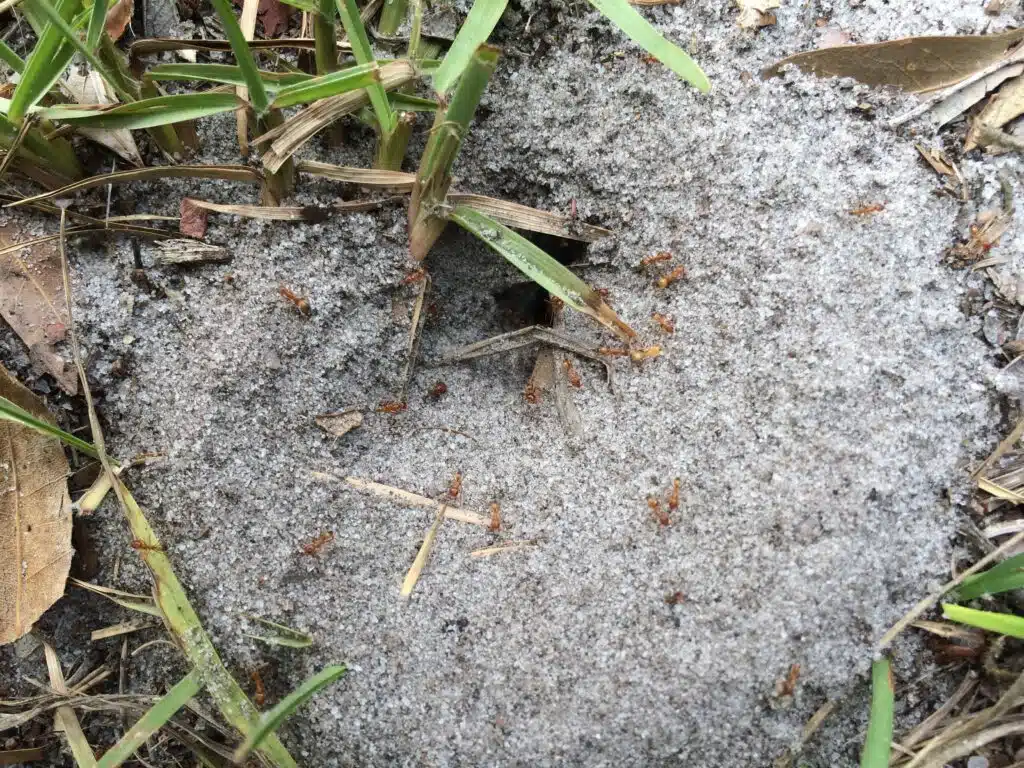
Pyramid ants get their name from their pyramid-shaped thorax. These ants are common in the US, particularly in Southern US.
Given these habitats are warmer, it means the ants live in soils with a higher sand percentage.
As a result, pyramid ant mounds are a combination of soil and sand of a volcano shape.
There’s a large crater in the middle of the ant mound which aids with ventilation.
Argentine ant mounds
Argentine ants are part of an invasive species. They grow up to 2.8mm.
These ants are known to live in very large colonies. These colonies are all based around a tall ant mound, mainly made from loose soil.
One of the distinct traits of Argentine ants is the capacity to move between ant mounds. Multiple ant mounds and spread out colonies communicate between them.
It’s rare to find a single ant mound of Argentine ants as this species uses multiple mounds. These can be spread out over a few miles.
Allegheny mound ants
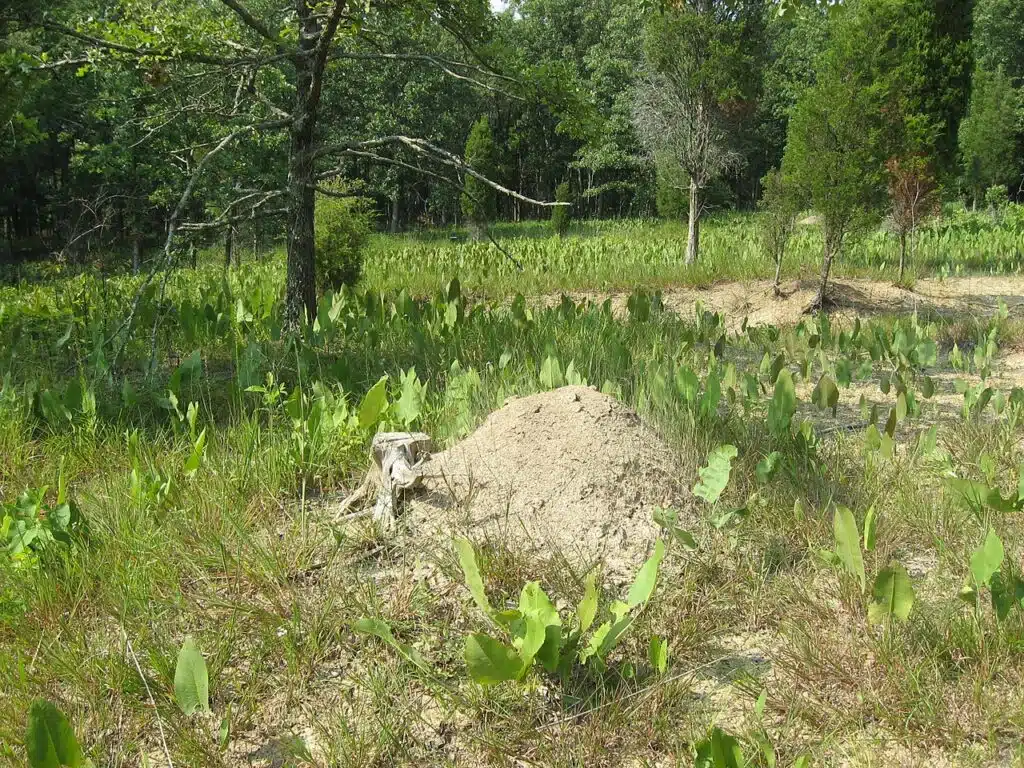
Allegheny mound ants get their name from the large purely-soil mounds they build.
Largely found in the US, these ant species are known to prefer building nests and ant mounds in grassy fields.
Allegheny mound ants use formic acid on grass, shrubs, and plants to clear out all vegetation from the area they play to build a mound on.
Texas leafcutter ant mounds
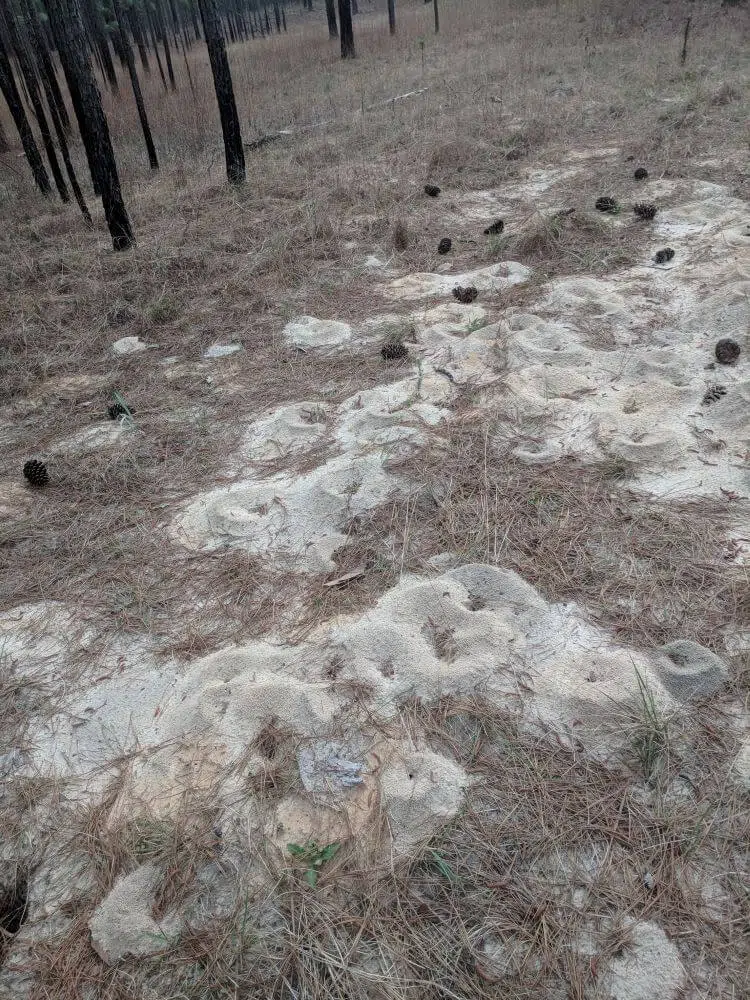
Texas leafcutter ants are known for attacking pine trees. These ants are among those that build multiple ant mounds over a small space.
Typical Texas leafcutter ant mounds are built close to each other. These mounds are shaped like a volcano’s crater. They are at least 5 inches tall and they can be as high as 14 inches.
Texas leafcutter ant mounds have a diameter of at least 1 foot.
Nest of Texas leafcutter ants expand up to 20 feet below the ground and the mound.
Harvester ant mounds
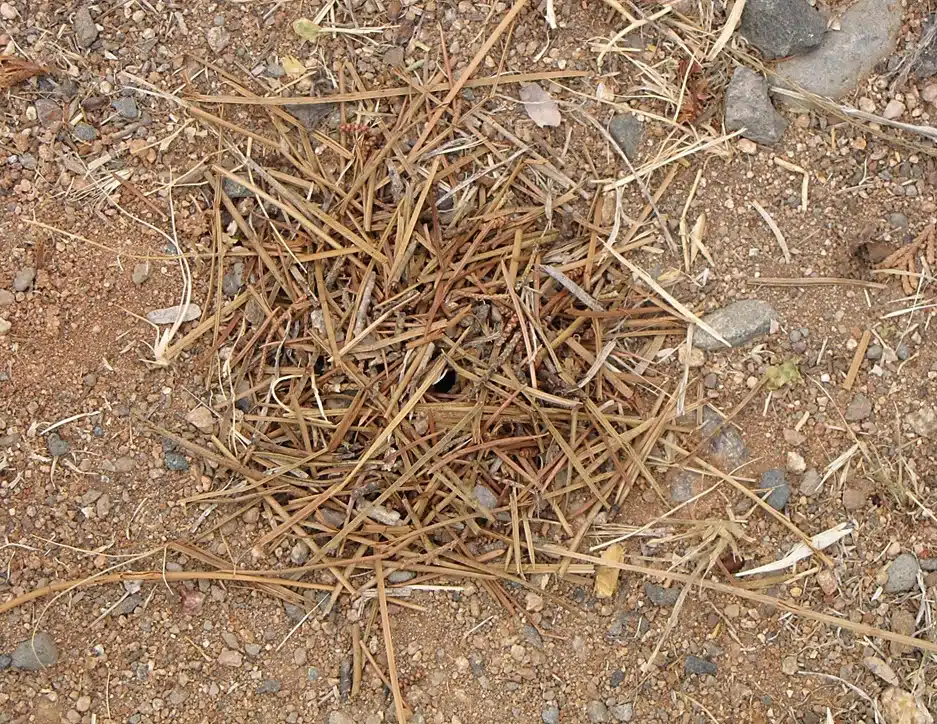
Harvester ants build mounds they don’t live in just above the nest.
These mounds are medium in size and they can rarely be as large as in other ant species.
Harvester ants are types of gathering ants and this is also seen in how they build ant mounds. Their mounds are often covered with pebbles or vegetation for better protection.
Yellow meadow ant mound
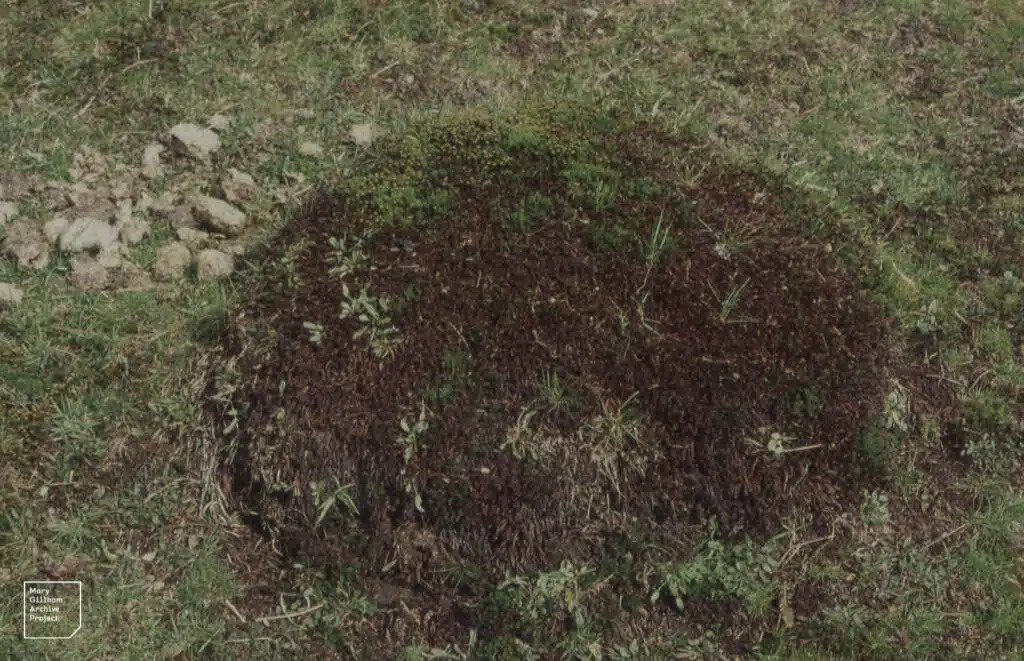
Yellow meadow ants are highly common in Europe. While rare in North America, this is one of the species that build ant mounds as tall as 20 inches.
One distinct trait of Yellow meadow ant mounds is their preference for grassland. These mounds are always covered in grass as ants don’t destroy any vegetation overgrowing its mounds.
Ant Mound vs Termite Mound
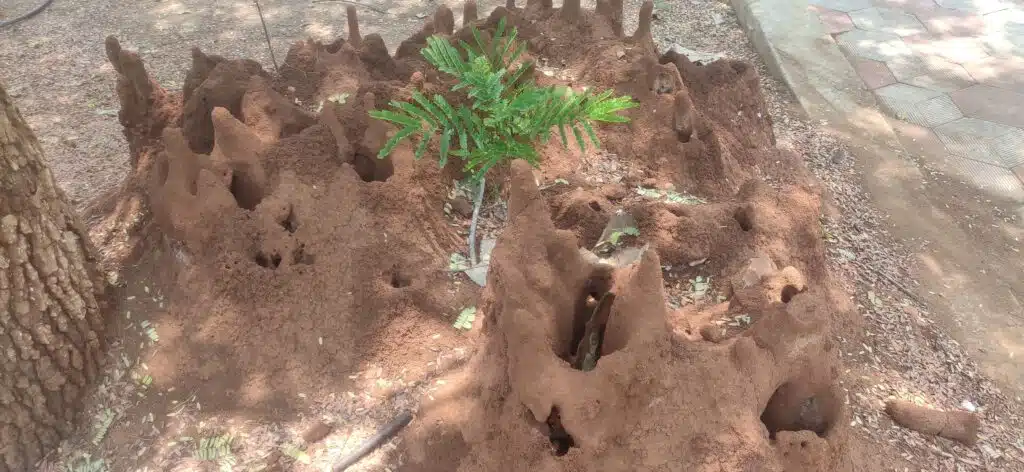
Ant mounds and termite mounds look similar, but they have different compositions. Unless this composition is examined, it can be difficult to tell the difference between an ant mound and a termite mound.
Ants mounds are mainly made with loose soil. In some cases, ant mounds can have traces of vegetation.
Termite mounds have different compositions. They are compressive of soil, feces, and chewed wood.
Differences in composition can be visually assessed. At the same time, termite mounds tend to have a composition that’s not as sticky or clumpy when wet as wood doesn’t mix with soil.
How to Get Rid of Ant Mounds in Your Yard?
Getting rid of ant mounds in the yard may require following one or several methods. Ideally, you want to stay clear of simply destroying the ant mound and moving on as ants will rebuild it quickly.
Soap and water
Soap and water are the general safe solution for ant mounds found in the backyard. Other pesticides have better chances of success but they are dangerous to kids and pets.
Soap is mixed with warm water and poured on top of the ant mound. Ant should die. You should only proceed to destroy the mound after the ants are already dead.
Boiling water
Pouring boiling water on the ant mound is one of the eco-friendly solutions against a large ant nest and against the tall ant mound.
Hot water dissipates the mound and you can use a shovel to level it down to the ground level once the hot water has destroyed the ants.
Boric acid
Boric acid is used as an antiseptic and as a pesticide. While not the safest solution for homes with kids and pets, boric acid tends to be less toxic than other pesticides.
It should only be used under clear indication and in spaces where kids and pets aren’t allowed.
How to Prevent Ant Mound in Your Yard
Preventing ants is the best solution to keep ant mounds away from the yard or lawn. This is a complex task that often requires getting rid of things that attractants such as open garbage cans, unpicked fruit, and animal feces.
Use ant baits
Ant baits and traps are ideal to lure in ants and to prevent them from nesting around the house. They use different types of chemical or organic baits to lure in up to a few thousand ants at a time.
Spray the lawn with dishwasher liquid and water
Ants don’t like soap. Some people prefer to water the lawn and yard with a 20-80 mix of dishwasher liquid and water. The higher the percentage of the dishwasher is, the more it will affect the lawn.
Most dishwashers contain surfactants. These tend to dry the grass on the lawn. However, areas prone to large ant infestations might not be suitable for pesticide use and a dishwasher seems like a friendlier alternative.
Spray the lawn with water and vinegar
Vinegar has a similar role to dishwasher liquid. While natural, vinegar is a herbicide which means it kills and repels ants but it also kills grass on the lawn.
1-to-1 vinegar-water mix ratios are recommended on areas other than your lawn. You can spray vinegar mixed with water around the backyard if you want to prevent ant mounds.
Interesting Facts about Ant Mounds
Ant mounds are some of the most interesting constructions ants create. Some even think these are the actual nests of ants when they are only the entrance and the exit of most ant nets.
- Ants Don’t Live In Mounds (Most Of The Time)
It’s rare to find worker ants in ant mounds. In other words, only a small percentage of ants of a given colony are found in ant mounds.
- Ant mounds can measure up to 3 feet in diameter
Ant mounds can measure up to a few feet in diameter and up to 20 inches in height with most ants. Allegheny Mound Ants regularly build ant mounds with a diameter of just over 3 feet.
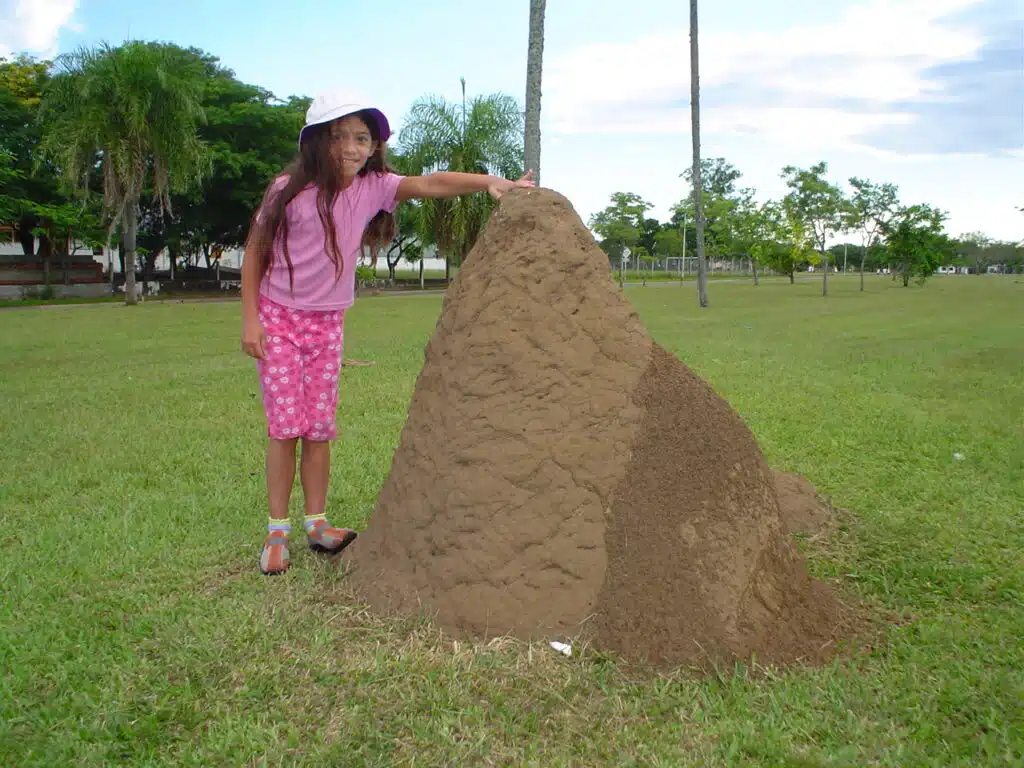
- Many ant mounds in the US are found in yards next to wooded areas
Ant mounds are common in the US. Many of them are found next to wooded areas. Mounds are often dealt with using pesticides, but there are other more environmentally-friendly solutions for ant mounds around homes.
- Ant mounds are not as tall as termite mounds
Ant mounds are a few times smaller than the tallest termite mounds. Ants prefer to build multiple mounds for large colonies.
Some termites can build mounds that are a few feet high. The tallest recorded termite mound is 12.8 meters (42 ft) in Congo.
- Ants can destroy grass and plants to clear out an area for a mound
While ant mounds have a protective role against predators, most ants prefer to kill off vegetation on the soil of a mound for better ventilation.
- Some ants cover up a mound
Ants such as Harvester ants are known to routinely cover up the mound with pebbles or mulch. This adds a layer of mound protection while not inhibiting airflow.
- Small and mounds aren’t an indication of small ant colonies
Even a small 10-inch-tall ant mound is not an indication of a small ant colony. Ants create elaborate tunnels in the ground which can be up to a few thousand times wider than the mound.
- Ant mounds should be destroyed at noon
It’s best to destroy the ant mound at noon. When the weather is the warmest ants tend to move away from the nest looking for food. This is the best time to use a shovel to flatten an ant mound.
Summary
Most ant mounds look similar to small volcanoes. They are made with loose soil excavated from the ground as ants dig tunnels and underground chambers for their colonies underground.
Ant mounds are generally smaller than termite mounds. They can be differentiated by composition as ant mounds are mostly made out of the soil. You can differentiate them from termite mounds which are made with soil and chewed pieces of wood.